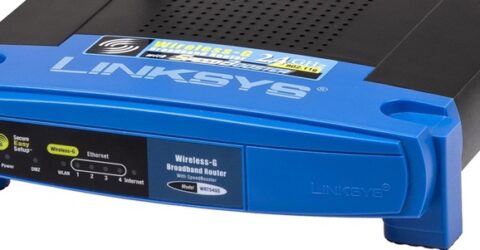Ten tips for reducing router interference
Reducing router interference can significantly improve your wireless connectivity – especially on slower connections

If the internet is the information superhighway underpinning our lives, our wireless routers are the slip roads leading to it.
Without wireless internet access, the majority of devices in your home simply wouldn’t be able to get online.
Even hardware manufactured with an Ethernet socket would need to be within a cable’s length of the router, or connected through electricity sockets using a Powerline adaptor.
Yet wireless internet coverage is notoriously fragile, capable of being hindered and blocked by anything from microwaves to mirrors.
It’s therefore vital to ensure you’re reducing router interference, and we’ve assembled ten golden rules for whole-home WiFi coverage.
But first, let’s consider why this is an issue – one which many people aren’t even aware of…
Why is reducing router interference so important?
Router interference manifests as fluctuating signal strength, inconsistent data transfer speeds, buffering on streaming media platforms and/or lost connections.
If you live in a property with gigabit broadband, periodic degradation of wireless signal strength probably won’t affect your WFH productivity, or online leisure activities.
On a slower ADSL connection, they could be the difference between being able to work from home or not.
Devices won’t warn you they’re experiencing data interference. They’ll simply be prone to running more slowly, buffering or dropping their connection altogether.
Again, the impact of congestion depends on what it’s affecting. Some online activities are more time-sensitive or interruption-proof than others.
Ten tips for reducing router interference
1. Position your router centrally within the home.
This is easier in a flat than a narrow Victorian terrace, but central WiFi distribution means less chance of signals being hindered by distance, walls, furniture or other wireless networks.
2. Ensure your router isn’t hemmed in.
Wireless signals find it harder to permeate solid wood and metal, so avoid positioning your router on a bookcase or – even worse – in a cupboard. Signals need space to flow freely.
3. Change the router’s default channel…
A huge amount of data is carried across the 2.4GHz frequency routers use by default. A minor adjustment could alleviate congestion – try switching to channels 1, 6 or 11.
4. …Or switch to a different band entirely.
If your router has dual or tri-band coverage, switching individual devices to the 5GHz or 6GHz frequencies will increase performance – though it’ll also reduce achievable range.
5. Investigate wireless repeaters…
These satellite units bounce wireless signals around to strengthen coverage and resilience. Investigate whether your WiFi router supports repeaters, which usually need to be from the same manufacturer.
6. …Or purchase a new router.
It’s usually possible to either replace your ISP-supplied router with a more powerful third-party device – or plug the latter into a router supplied as part of a proprietary full fibre network.
7. Look for wireless devices using different frequencies.
Since the 2.4GHz bandwidth is congested, buy devices which don’t use it. Look for cordless hardware harnessing the 900MHz frequency instead of 2.4GHz, or dual-band devices.
8. Reposition other devices.
Microwave ovens and baby monitors are notorious for causing WiFi signal conflicts. If you can’t move your router, can you move other hardware to avoid signals overlapping?
9. Turn it off and on again.
Forgive the cliché – rebooting your wireless router enables new firmware updates to be installed, cools down potentially overheating hardware and may improve overall performance.
10. Switch to wired connections.
Ethernet connections between a router and a device deliver faster connections with more stability and less interference, while freeing up bandwidth for other wireless-only equipment.






